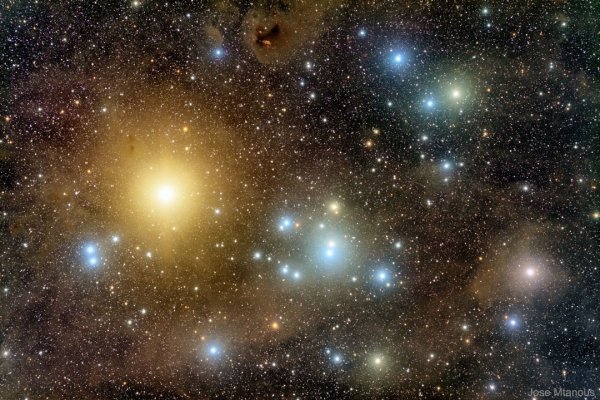A group of scientists led by Stefano Torniamenti (University of Padova) and in close collaboration with Mark Gieles (ICREA, ICCUB-IEEC), Friedrich Anders (ICCUB-IEEC), have published new results that hint at the existence of several black holes in the Hyades cluster, making them the closest black holes to Earth ever detected. The work was carried out during a research stay of Dr. Torniamenti at the Institute of Cosmos Sciences of the University of Barcelona (ICCUB), one of the research units conforming the Institute of Space Studies of Catalonia (IEEC) and it appeared in the Monthly Notices of the Royal Astronomical Society this September.
Since their discovery, black holes have been one of the most mysterious and fascinating phenomena in our Universe, becoming an object of study for researchers all over the world. This is particularly true for small black holes, because they have been the most observed during the detection of gravitational waves. Since the detection of the first gravitational waves in 2015, the detectors have observed many events which correspond to mergers of pairs of lower-mass black holes.
In the newly published paper, the team of astrophysicists use simulations that follow the motion and evolution of all the stars of the Hyades, which is the closest open cluster to our Solar System (its distance to the Sun is approximately 45 parsecs or 150 light years) to reproduce its current state. Open clusters are loosely bound groups of hundreds of stars that share some properties such as their age and chemical characteristics. The results of the simulation were then compared to the actual position and velocities of the Hyades stars, which are now accurately known thanks to the observations made by the Gaia Satellite of the European Space Agency (ESA).
“Our simulations can only simultaneously match the mass and size of the Hyades if some black holes are present at the cluster centre at the present day (or until recently)” says Stefano Torniamenti, now postdoctoral researcher at the University of Padova and first author of the paper. The work was done during a research stay of Dr. Torniamenti at the ICCUB and it is the result of the close collaboration of the University of Padova, the Institute of Cosmos Sciences of the University of Barcelona (ICCUB-IEEC), the University of Cambridge (UK), the European Southern Observatory (ESO) and Sun Yat-sen University (China).
The Hyades observed properties are best reproduced by simulations with 2 or 3 black holes at the present day although the simulations where all the black holes were recently ejected (less than 150 million years ago, roughly the last quarter of the age of the cluster) can still give a good match because the cluster’s evolution could not erase the imprints of its previous black hole population.
The new results indicate that the black holes born in the Hyades are still inside the cluster, or very near the cluster, which makes them the closest black holes to the Sun, much closer than the prior candidate, the black hole Gaia BH1, which is at 480 parsecs from the Sun.
In the last few years, the advent of the ESA Gaia space telescope has allowed us, for the first time, to study in detail the position and velocity of the stars of open clusters, and to identify each star with confidence.
“This observation helps us to understand how the presence of black holes affects the evolution of star clusters and how in turn star clusters contribute to the gravitational wave sources ”, comments Prof Mark Gieles, host of the first author in Barcelona. “These results also give us a glimpse at how these mysterious objects are distributed throughout the galaxy.”
Paper details
“Stellar-mass black holes in the Hyades star cluster?”
DOI: 10.1093/mnras/stad1925
Contact information
Stefano Torniamenti
University of Padova, Italy
Email: s.torniamenti@gmail.com
Mark Gieles
ICREA, Institute of Cosmos Sciences of the University of Barcelona (ICCUB), Institute of Space Studies of Catalonia (IEEC)
Barcelona, Spain
Email: mgieles@icc.ub.edu



